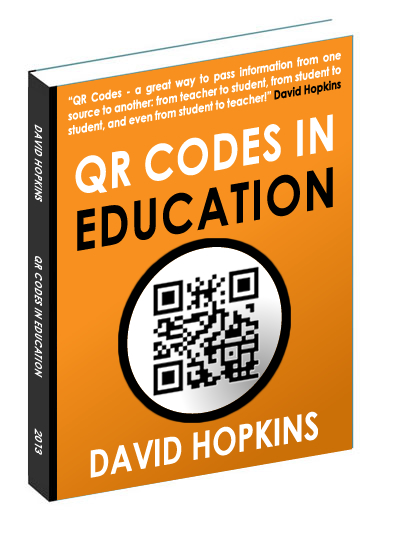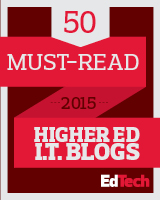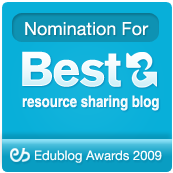Comments and Feedback #edcmooc
 Now the course is completed, the comments on my artefact have been made available. Many thanks to the 9 individuals who left such complementary and encouraging comments.
Now the course is completed, the comments on my artefact have been made available. Many thanks to the 9 individuals who left such complementary and encouraging comments.
Before I list the comments … I have one question. I wonder what the next cohort of students will make of the MOOC? Considering the volume of discussion on Facebook, Twitter, and other networks, as well as the wealth of information and analysis on individual or team blogs, it’ll be a very different experience than we’ve had. Won’t it?
Anonymous comments and feedback are below (many thanks to the markers), and the “score from your peers” was given as a ‘2‘ indicating the artefact “achieves this fully or almost fully” (based on the marking criteria of the MOOC themes – see here for the marking criteria and submitted artefact).
- Wow this is GREAT. BTW I live in Manhattan about 10 min. walk to Times Square so I super-related to the visual! Love how Prezi was used to work with the “Times Square Crosswords” concept. So much was well embedded and organized the narrative. This is the best artefact I’ve seen. The author seems very comfortable in the digital environment. Thank you!
“Great! Well done. “Draws you in.” Excellent! Thanks.”
- #1 Yes, the artefact addresses a number of themes suggested by the course material #2 Yes, the author has shown understanding of several themes, and offered visual material as metaphors that help deliver these effectively #3 Yes, the artefact touches upon a number of themes involved with traditional and current theories in digital pedagogies #4 Yes, the choice of production tools, methods and media content from the web is appropriate to promote the authors message #5 Yes, the artefact invokes a reaction to the content, and invites a second viewing to reflect on the story.
“The overall impression is that the author is engaged in reflecting on the MOOC course content, and seeks to present materials as a learning object to promote a personal reading of current theories in education. This coherent production asks questions, and offers personal readings as answers. This results in a thoughtful and playful use of media, evidently drawn from a life rich in cultural experiences.”
- I think the artefact is a nice piece.A colourful way to portray how most aspects of human life has been transformed by technology over the years and what to even expect in the years ahead.
“Good”
- 1. The artefact addresses not one theme but the whole philosophy of this course: it emulates the question we’re compelled to ponder over as the objective of this course. The overall impression of the project is elegantly balanced between utopic and dystopic. The author urges us to seek that balance in our daily lives pertaining to technology and not technology override human sensibilities. 2.The author definitely not just understands the themes covered in the course but also expresses his own interpretation of the same quite effectively. 3.The aretefact has so much to say about digital education: that is a democratic means of current and future education, that it holds the potential to enrich the life of every individual who has a simple access to internet and that it is our responsibility as a society to let digital education help us communicate, learn and grow better and not become larger than life as we know it. 4. The choice of media is definitely appropriate for the project. Prezi allows an elegant combination of text, sounds, videos and images and all these media have been used quite optimally to convey his message. That the backdrop is a neon lit cityscape is icing on cake. 5. The artefact definitely got me thinking, just like the course did. I have been looking for the appropriate terms to express my own digital artefact but unfortunately have not been able to describe mine as articulately as the author of this assignment has. One of those terms is “entity” in reference to technology.
“Over all impression of the artefact has been: very articulately described and impressively executed. The message is short and crisp, That technology is used appropriately can contribute to our growth and the same if allowed can gain a life larger than our own leading to undesirable consequences.”
- This artefact enough represent one of main themes of the course – “Looking for the future”. But it is not only thoughts about future, it is also thoughts about past and path traversed by humanity in the digital environment. “Your choice – which future would you prefer?” – the question asked by the author, and we need to think about this too. Varied choice of video allows to focus on different moments surrounding reality and to ponder about being human in digital world.
“Great interesting artefact”
- Formal assessment: yes, your artefact meets all the criteria fully. The rest will be relatively informal, since I am acting as an ‚additional reviewer‘ for your digital artefact (I chose to evaluate more than 3, and was lucky enough to get your work assigned to me randomly). First of all, I loved your definition of a digital artefact („it‘s just another term, albeit slightly pompous…“)! The artefact itself: very entertaining, engaging, interesting. Great work! Loved the choice of videos. I have seen the „boring econ professor“ previously, but loved to see it again in the context of #edcmooc. Thanks for including Asimov‘s video. I noticed it being mentioned in Twitter, but did not get around to viewing it. Thanks for the opportunity to view it via your artefact! Asimov is a visionary: personal learning revolution, life-long learning, etc. The video with college students was thought-provoking (especially since I also teach at a university).
“Minor point: the digital artefact is Prezi presentation, but the link is to your blog where one can find the presentation. Actually, I even prefer it that way in your case, since your #edcmooc blog looks interesting, and I plan to go back and read it as part of my post-edcmooc experience.”
- Very good job, the author does fully address to the themes of the course and explores the key concepts of it, digital education is the most important factor in the artefact along to the digital cultures, the choice of media is excellent, it made me think about the changes that delivering media has on students, and whether or not calling students the students is a neat idea or is it better to name them in a different way as they are more than students, they are members of a digital culture and learn by exploration on it.
“Excellent work, the selection of media is excellent, the contents were nicely delivered.”
- This artefact adresses different ideas we saw through MOOC, and involves different perspectives on how technology may help us to achieve goals, let us communicate better, and the “dark side” of it too. The video that talks about the project with teens on how they see and relate through technology, reaches de differences between generations, and a new whole universe open to possibilities as Asimov says at the other video. The final text got me thinking, loved the questions.
“I think it is a very good synthesis of the MOOC in general, videos are some of them too long, but are good to explore different perspectives on the discussion of how technology changes the way we communicate, and become who we are. Congrats!”
- David Hopking’s digital artefact is simply well- done, covering all the themes regarding technology and education. In the beginning we are asked: “where are we going”? And we have Jamiroquai’s Virtual Insanity which enhances the dystopian idea , and our “ in between position’ to where we are going to go. As it follows, we have another question: “where have we come from’? which is followed by Ferris Beuller’s Day off video. It is a debate about the great depression and the voodoo economics in the 1980s as claimed by Bush!. I did not understand how the debate is related to the question, even though I thought the scenes with the students who were bored to tears, were funny. The addition of Isaac Asimov’s discourse about education was an excellent choice followed by the scenes with students with their digital devices. It was a very creative way on how to show the digital immigrants and digital natives in today’s society.
“I enjoyed watching this digital artefact, but I think it drags a little bit, especially when David adds his reaction regarding technology and education, I felt that he has expressed his reaction via his visual choices which ‘spoke’ for themselves.”
So, now what?

Image Source: Ed Guzman / (CC BY-SA 3.0)
Here are links to the other pages that will form the series of posts on the Coursera MOOC:


















One thought on “Comments and Feedback #edcmooc”
Comments are closed.